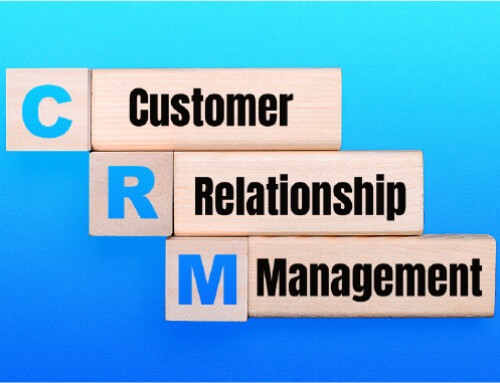Contents
Your Guide to Mastering CRM Marketing Campaigns
CRM marketing campaigns are the backbone of your CRM strategy. They’re the most efficient way to engage with your audience and build relationships. CRM Marketing Campaigns are meant to help companies build a relationship with their customers. It helps them understand their needs and gives them what they want. CRM Marketing Campaigns are typically used for lead generation, building brand awareness, and increasing customer retention rates.
What Are CRM Marketing Campaigns?
A CRM marketing campaign is a way to use data and technology to improve marketing decisions. CRM systems can be used to segment and target customers based on their purchase history, behavior, and engagement with your brand. You can use this information to customize your message to each customer to optimize ROI (return on investment).
What is a CRM?
CRM stands for “customer relationship management”, and it refers to any software program designed to store information about a business’s customers.
When it comes to CRM, there are two main types: system-based and manual. System-based CRMs include Salesforce, Hubspot, or Zoho—software programs that track personal data points like name, email address, company size, location etc. Manual systems include Excel spreadsheets or handwritten notebooks (ugh!).
Both types of CRMs can help you create successful marketing campaigns by providing valuable insight into your customers’ behavior patterns—which makes them prime targets for personalized outreach!
What is a CRM Marketing Campaign?
CRM marketing campaigns are an essential part of growing your business and reaching your customers. They can help you engage with your audience in a more personal way, increase brand loyalty, and even boost sales. The key to creating a successful campaign is knowing who you want to reach and how they’re likely to interact with your brand. After defining your target audience, identify which channel or platform would be best for them (e.g., email or social media), then determine the content needed for each stage of their journey towards conversion! A CRM marketing campaign is a personalized, targeted approach to marketing strategies that rely on your customer’s history with the company and the information they have provided.
Why Should You Run CRM Marketing Campaigns?
A successful CRM marketing campaign will help you find new ways of reaching out to customers and solving their problems in a personalized way. Your goal should be to understand your audience’s needs so that you can provide them with relevant content that shows how they can benefit from your product or service.
It’s important to create CRM marketing campaigns because you want your customer experience to be better, and a well-designed campaign can help you grow your business in several ways:
- Grow your sales. Creating a marketing campaign will allow you to reach more customers and increase sales.
- Increase customer retention. The more time customers spend with your brand, the more likely they are to purchase from you again in the future.
- Take advantage of new technologies and trends. You don’t want to miss out on any opportunities that could help boost your profits!
Let’s look at two examples of how CRM marketing campaigns can help grow your business. Imagine that you own a coffee shop. You’ve been in business for five years, and you want to expand your customer base. So, you create a marketing campaign focusing on getting new customers into your store. For example, maybe you offer free WiFi with every purchase or discounts for students who show their ID.
You might also create a promotion where customers who spend more than $10 get a free drink. These are just some ideas – the possibilities are endless!
CRM marketing campaigns can help with this by providing a way for you to get in touch with customers, gather their information, and learn more about them. This can lead to more targeted messages, better engagement, and higher conversion rates from your marketing efforts.
How to Turn Your CRM Marketing Campaigns into a Guaranteed Success
A CRM marketing campaign can be anything from a simple email blast to an in-depth survey with multiple follow-up questions. The most important thing is that it’s specific to your company’s goals and provides relevant information for you to use in your marketing strategy.
The first step in creating CRM marketing campaigns is defining and segmenting your audience. Who are you trying to reach with your campaign? What channels should be used? How will you measure success? These are all important questions to answer before diving into the actual campaign itself.
The next step is identifying which content will work best with this particular audience, as well as what channel or platform it should live on. Once you’ve got that figured out, create an actionable plan for how long each piece of content will run and when it would be most effective to accomplish its goal.
Lastly, map out your customer journey: who they are, where they come from (both online and offline), and where they go after their interaction with you ends—whether it’s after purchasing something from one of our stores or simply reading a blog post we’ve written about customer service best practices!
- Create a plan for success. First, decide what your goal is and how you’ll measure it. For example, if your goal is to increase the number of leads from clients who have switched from one CRM solution to yours, then you’ll need to track how many leads you receive after a campaign has been run.
- Analyze performance over time and optimize accordingly. Once you have enough data on which channels are working best with specific types of customers or at different points in the sales funnel (trying out new features vs buying licenses), use insights gleaned from this information to create more content and refine the campaign structure.
- Identify what content will be needed during each stage of the customer journey—from marketing messages that inform prospective users about their needs; through introductions by sales reps; up until they begin using the software as part of their daily routine—and map this out before making any other decisions about your campaigns.* Choose channels based on where prospects are spending time online (e-mail marketing vs social media). According to research by The Bridge Group Inc., 41% of U.S. adults spend at least an hour per day using email apps compared with 33% who spend at least an hour per day using social networks such as Facebook Messenger or WhatsApp Messenger but only 20% spend an hour per day watching videos on YouTube.* Identify platforms where prospects are most likely going after hearing about products or services first thing in morning news programs like Good Morning America (GMA), Today Show etcetera…
Step 1: Define your target audience
The first step in this process is to define your target audience. This involves identifying exactly who you want to reach and then determining how best to reach them. It’s important that you get this right because once defined, your target will determine the type of content you create and how much time and money you put into it. To start a CRM marketing campaign, you need to know the following: – Who is your target market? In order to plan a successful CRM marketing campaign, one must first fully understand the audience. This includes understanding what could be appealing about your company and where you could be making a sales pitch in order to get them more interested in buying from you. More than ever, it’s important to understand your target audience. This will help you determine the right type of content you should create to engage them and better reach your goals.
Knowing who you’re trying to attract as well as their demographics is the first step in starting CRM marketing campaigns that will be super-successful because it will resonate with them.
The good news is that defining your target market isn’t as complicated as it may seem! You just need to answer a few questions:
- Who are my customers?
- What are their needs?
- How can I help them?
Once these questions have been answered, we recommend creating an avatar (or series of avatars) based on what kind of person might fit into each category or subcategory within your target market segments. For example, if I were marketing CRM software for small businesses owners with less than 100 employees, my avatar would be someone who owns their own business but doesn’t necessarily have any experience using CRM software in an organization large enough to require dedicated full-time employees for everything from sales data entry through customer service inquiries.*
Step 2: Identify the right channel and platform for your campaign
Once you’ve identified the right audience to target, it’s time to choose a channel and platform that is best suited for your campaign. So, step 2 is settling on a marketing channel that can be integrated into your CRM. Now, most CRMs are very limited when it comes to multi-channel marketing campaigns. Even if an industry-standard CRM like Keap can handle email blasts, you’ll need something feature-rich and powerful enough to organize and automate all your marketing effort in one place. RunSensible, for example, is a fully stacked, comprehensive CRM and marketing platform designed for small business owners and entrepreneurs. RunSensible will empower you to run your CRM marketing campaigns, no matter if you’re focusing on email, text messaging, content marketing, website lead generation, or even phone calls (and it costs a fraction of what the same pack of tools will cost you if you get them from giants like HubSpot)So, with the right tool, you don’t have to limit your marketing demands to the CRM’s limitations.
The following are some of the things to consider when choosing your channels:
- How can you engage with this audience?
- What kind of content do they consume?
- How does this content fit in with your brand?
Determine the type of campaign you want to run. You can run many different types of campaigns, including email list building and social media marketing. Most companies will want to do both, but starting with one type and then adding another is also a good idea. For example, if your business has an existing email list and you want to generate leads from social media posts, then start by creating content for those platforms first. The type of campaign you run will depend on what you want to achieve. For example, if your goal is to generate new leads from social media posts, consider writing blog posts with call-to-action buttons that lead directly to an online form for collecting information about new leads.
CRM Marketing Campaigns Focused on Social Media
Next, you need to decide what type of campaign you want to run. The two main types of social media campaigns are brand awareness and lead generation. Brand awareness campaigns focus on building your company’s visibility through content that educates potential customers about who you are and what services you offer. Lead generation campaigns are designed specifically for collecting contact information from consumers in exchange for something valuable like an eBook or free consultation with a salesperson. The next step is to determine the type of campaign you want to run. You can ask yourself what type of content will help achieve your goals, such as blog posts, videos, infographics and podcasts. If a company’s goal is to increase sales by 15%, then consider creating an online course that teaches customers how to use one of your products or services more effectively.
There are many different types of social media campaigns, depending on your goals and audience. For example, you could create a contest to get people to share a post or comment on it in order to win an Amazon gift card worth $100. If you want to increase brand awareness, consider running an Instagram campaign with photos that highlight your company’s culture or mission statement. Another option is running a Facebook contest where participants have to submit their own photos for the chance of winning some sort of prize—perhaps even cash or another type of reward.
Step 3: Identify what content you’ll need to run a successful campaign
You’ve identified your audience and their needs, and you’ve decided which channels to use. Now it’s time to think about the content that will be driving this campaign.
Content is king in CRM marketing campaigns because it’s what keeps people coming back for more. Your content should:
- Be relevant to your campaign and its goals
- Be relevant to your audience
- Be relevant to the channel you’re using (social media, email, etc.)
- Be relevant for the platform (mobile or desktop)
If you don’t have good content at each point along this chain, chances are good that your campaign won’t go very far—and even if it does get off the ground, it’ll likely sputter out quickly due to low engagement rates or lack of interest from followers/customers.
Step 4: Map out your customer journey
A customer journey map is a visual representation of your customers’ path to purchase. It maps out each step in the process and highlights each touchpoint in which you can engage with your audience. You can use this information to identify key moments in the customer experience that may be ripe for further engagement, such as when they are researching or comparing products, or just after they have made a purchase.
There are many different methods for creating a customer journey map—you might start by listing out all of the steps involved in someone’s purchasing process, then sketching them out on paper or using software like Excel to create an easy-to-understand visual representation (for more information on how to make one yourself, check out our article here). Once you have mapped out your customer’s journey from beginning to end, look at where there are opportunities for additional sales—areas where it’s difficult for customers to find what they’re looking for? Are there places where customer support can be accessed easily? Do any parts of their journey cause frustration or confusion?
Step 5: Create a plan for how you’ll measure success
Once you’ve defined your goals and success metrics, focus on how you will measure them. As a business owner or entrepreneur running your own CRM-powered campaign, it’s important to be able to determine early on in the campaign whether or not it is successful. This is usually accomplished by reviewing data from web analytics tools like Google Analytics or Adobe Analytics. It’s also helpful to get feedback from sales reps and customers about their experience with the campaign so that you can make adjustments along the way if necessary.
To create an effective marketing campaign, it’s important to define what success looks like. In order to do this, we recommend setting up key performance indicators (KPIs). A KPI is simply a metric used by your company as an indicator of performance or success at some level. KPIs are meant to help provide visibility into where improvements can be made within the organization. This is important because, without clear definitions of what constitutes success, it can be difficult or impossible for teams across departments within an organization—and even different organizations—to work together effectively toward shared goals.
Setting up KPIs will also allow you to track how well individual campaigns are performing in comparison with each other and against their previous performance levels over time in order to make adjustments as necessary before launching into another campaign.
Step 6: Analyze your performance and optimize over time
When you’re done with a campaign, it’s important to take a step back and ask yourself: did it perform as well as I expected? Was there anything that could have been done better?
To answer these questions, you can look at the results of your campaign. What was its ROI (Return On Investment)? Did it reach its target audience? How many leads did it generate?
You can also compare your campaign’s performance against other similar campaigns and benchmarks in order to see how much better or worse it did than they did. This will help keep you on track with future campaigns, as well as help identify areas where improvement is needed.
Identify which of your marketing channels are performing best. For example, if you’re running a social media campaign, look at which platforms have generated the most interactions (likes, shares, retweets). If you’re running an email campaign, pay attention to how many people opened the emails and clicked through on them.
Use this information as a starting point for optimizing future campaigns by planning for more of what works well for each channel. You could also try new campaigns with similar messaging or offers as ones that performed well but did not get much interaction from customers. This will help ensure that even if there aren’t any significant changes made in terms of how much engagement takes place overall throughout an entire CRM marketing strategy over time, there will still be some forward progress being made by way of upgrades based upon earlier successes.”
How to Measure the Success of Your CRM Marketing Campaigns?
Whether you’re a marketing professional or if it’s your first time running a CRM marketing campaign, it’s a good idea to keep track of the effectiveness of your marketing campaign. You can’t improve what you don’t measure, after all. Technically, I should have included this section before going into the steps for starting a CRM marketing campaign, but from experience, metrics and measurements are not exactly an exciting part of marketing for new entrepreneurs and business owners. It only becomes important when they’ve thought about all the different ways of running their campaigns. So, I’ve decided to place this section on metrics right here after the tutorial, even though it’s very much a part of it.
If the goal is to sell more products or services, then there are several metrics that can be used to quantify success: sales volume, revenue generated from those sales (or profit), and customer satisfaction with their purchases. The key is finding metrics that match up well with what you’re trying to accomplish—for example, if your goal is to get as many people as possible through your funnel and into an online shopping cart in order to qualify for Amazon’s “buy box” promotion (which gives sellers higher profits), then measuring how many people have completed this step would be critical.
Use a Simple Formula
You can use a simple formula to measure success in marketing campaigns. First, you need to find the right metrics to collect. Second, you need to choose how long your data collection period is going to be. Finally, you should decide what criteria will determine whether the campaign was successful or not.
For example, if I wanted my blog post on how to measure success in marketing campaigns (this one) was successful after 24 hours, then I could say:
Success = # visitors / # views / # comments
Understand Your Marketing Funnel
Your marketing funnel is the process of moving prospects through the stages of awareness, interest, desire, and action. It’s a useful tool for understanding how to target your marketing efforts and track success in campaigns.
The marketing funnel is designed to help marketers understand how people interact with their brands—and where they drop off along the way. The top of the funnel represents those people who are aware of your brand but haven’t interacted with it yet; down below are folks who have made a purchase or engaged with some other form of interaction (like signing up for a newsletter).
The bottom line is that you want to move as many people as possible from one stage to another so that they eventually reach “conversion”—or purchase intent. If you can do this within 30 days or less (this varies by industry), then congratulations: Your campaign has been successful!
Set Benchmarks And Goals
Set goals for each campaign, then set benchmarks for each campaign. The benchmarks should be determined in advance and realistic.
Benchmark metrics include:
- Conversion rate (CR) — the percentage of website visitors that purchase or complete a given action
- Cost per acquisition (CPA) — how much it costs to acquire a customer through marketing efforts
- Cost of goods sold (COGS) — cost of goods sold divided by revenue
Track the number of leads or customers you’ve acquired from your campaign. Once you’ve set up a conversion tracking system in Google Analytics, you’ll be able to see the number of conversions (leads or customers) that each channel and ad generate for your website. This is another metric that helps you determine which channels contribute most to your bottom line—and whether investing more time and money into a given channel is worth it. Benchmarks can be based on previous performance or industry standards. The key is to set clear expectations for every campaign and establish metrics that align with your goals.
Set Up An Automatic Notification System To Inform You Of Key Events.
Use a tool like Slack to set up an automatic notification system to inform you of key events.
For example, if your goal is to have 100 retweets on Twitter for a campaign, configure Zapier or Google Sheets (or another tool) so that when the 100th retweet occurs, it sends you a notification via Slack. This way, if your employees are involved in other projects and can’t check their email all day long like they used to be able to do back in the 2000s (which was before most people started using smartphones), they’ll still get alerted when something important happens with their marketing campaigns so they can take action right away without missing out on anything important.
Add a Smart Survey to Your CRM Campaign
Whenever I hear the word survey, there’s a part of me that’s just about to blurt out “no, thank you, don’t have the time,” before crossing the street (or closing the website or email, which is basically the same thing). But recently, there have been a lot of improvements in the area, attempts to make surveys a little less painful and a little more attractive for the user. I once found myself happily answering question after question before I realized it. Achieve something like that and you’ll have a priceless source of data and first-hand feedback that will help your business in all sorts of ways.
Now, when it comes to CRM marketing campaigns, some business owners and even some marketing specialists may not agree with surveys, believing these kinds of feedback tools to be mostly useful for existing customers and loyal clients. However, with the right customer feedback tools in your CRM, you can easily create relevant surveys while still onboarding your leads.
One of the most useful ways to use surveys as a way to measure the success of your CRM marketing campaigns is to ask the leads who are just about done being converted into customers about where and how they heard about your business. Sure, there are ways to see if a lead lands on your website from a Google search or directly from social media. But, by asking how they first heard about your business, you’ll have a much more exact source of data. For example, someone may see your campaign on social media, learn your company name, google it, and land on your website. That should be a plus for your social media channel, but without the survey, it will be counted as a plus for content and SEO marketing.
Track Your Progress
How do you know if your campaign is a success?
It’s important to measure progress over time and not just at the end of the campaign. That way, you can learn how well your campaign is doing and make adjustments based on what works and what doesn’t. Here’s how:
- Track which channels are most effective in driving traffic or sales.
- You can use Google Analytics to see which channels are driving inbound traffic, as well as which ads on those channels perform best when it comes to driving visitors that then become leads or customers (this is called conversions). You should also get specific data about how much each channel contributes in terms of cost per acquisition (CPA), so that you know exactly how much money each channel costs per lead or sale—and whether this number makes sense for your business model
- You can build a campaign dashboard from scratch, but most campaigns have some type of tracking code already embedded in them. You can access this data by signing into Google Analytics and navigating to the “Goals” tab. From there, you’ll see a list of all your goals with their corresponding conversions grouped by source/medium (i.e. search engine or social media platform). You should also include any other metrics that are important to your business.
Analyze The Results Of Your Campaigns Using A Campaign Dashboard
A campaign dashboard is a visual representation of your marketing efforts. It can be as simple as a spreadsheet or as complex as a custom web application. A campaign dashboard should answer the following questions:
- What are the key metrics for our campaigns?
- What did we do well?
- What didn’t go so well?
In order to measure success, you’ll want to use both qualitative and quantitative methods. Qualitative data include focus groups, surveys, and other forms of feedback that help you understand how people feel about your product. Quantitative data includes web analytics, A/B testing and other tools that help you understand how people are using your product.
Marketing is a tough game. It’s easy to feel like you’re spinning your wheels, but it’s important to keep track of what works and what doesn’t so that you can refine your marketing strategy. Qualitative and quantitative methods may seem like different worlds, but they actually complement each other nicely: qualitative research helps you understand how people view your brand and content, while quantitative analysis shows you how many people were affected by it or where they came from (and will help identify ways improve).
How to Bullet-Proof Your CRM Marketing Campaigns
CRM marketing campaigns are an essential part of growing your business and reaching your customers. They can help you engage with your audience in a more personal way, increase brand loyalty, and even boost sales. The key to creating a successful campaign is knowing who you want to reach and how they’re likely to interact with your brand. After defining your target audience, identify which channel or platform would be best for them (e.g., email or social media), then determine the content needed for each stage of their journey towards conversion!
Disclaimer: The content provided on this blog is for informational purposes only and does not constitute legal, financial, or professional advice.







